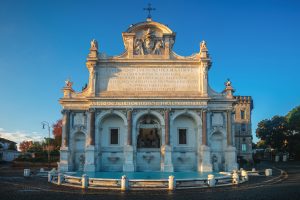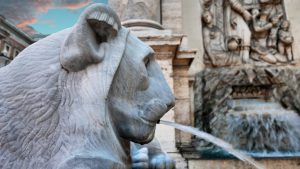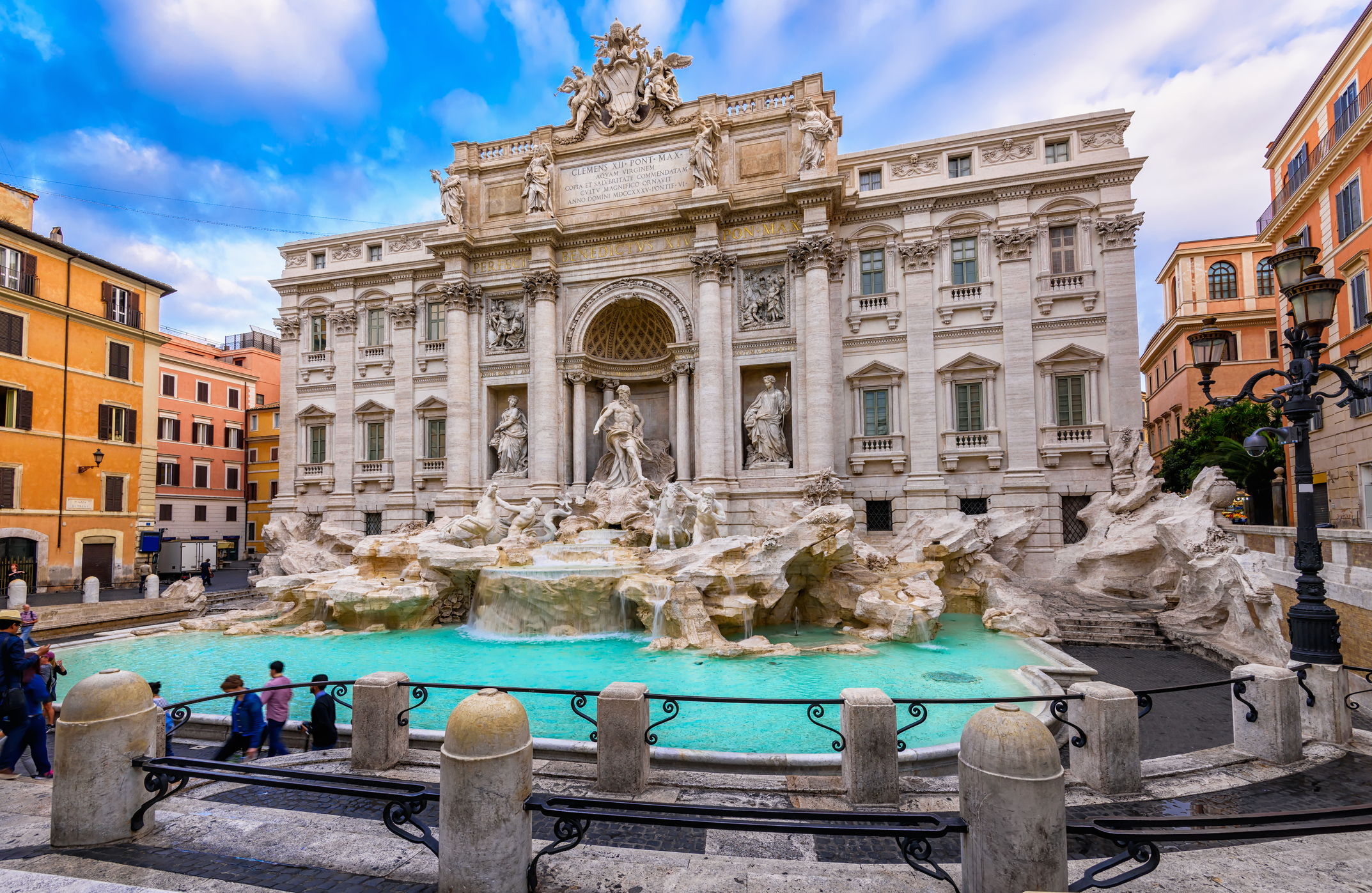What would a trip to Rome be without a selfie in front of the Trevi Fountain and the traditional tossing of a coin in its light blue waters? Who hasn’t stood in awe of our capital’s beauty from the Gianicolo, with the mellow song of its Fontanone transforming the moment in pure poetry? And Piazza Navona! The three fountains in Piazza Navona, Quattro Fiumi’s, Moro’s and Nettuno’s, three marble and aquamarine jewels that make this corner of Rome even more precious.
And of course, how can we speak about Rome and its fontane without spending a word or two about the most common, yet likable of them all, the ubiquitous nasoni, yearned, welcomed oasis of relief for every Roman and visitor during the hottest summer days.

Rome wouldn’t be the same without its fountains, I think we can agree on it. But neither would it be without the history behind them and, more precisely, the history of their waters and how they have been flowing with mathematic regularity for centuries. Yes, because the history of Rome’s beautiful fountains goes hand in hand with that of its aqueducts and leads us all the way back to the old times of the ancient Romans, of their architectural and engineering abilities and tells us how we, people of the 21st century, rely still today on their inventive and intuitions to make of the city that once was the head of the world, a travertine and marble orchestra of fluid, crystal-like arpeggios.
Caput mundi, we are! But how do we quench our thirst?
Yes, because if it’s true that, for centuries, the Tiber had been sufficient to supply water for Rome and its people, with the coming of the 4th century BC, that was no longer an option. It’s Sextus Julius Frontinus — engineer, politician and author of the 1st century AD — to tell us how Rome, in those years, had been going through a demographic boom that led the city to seek new ways to, quite literally, quench its thirst. And feed its public baths and fountains, of course. This is when aqueducts, immense examples of Roman civil engineering, transformed Rome into the regina aquarum, the queen of waters, of the Antique world: no other place on Earth had such a large quantity of water at its disposal as Rome did.
Building the aqueducts, however, came after finding springs of fresh water able to supply the city and it wasn’t something all springs around Rome could do. Their water had to be drinkable, abundant and, of course, constant throughout the year; even more importantly, springs had to be located at a higher altitude that Rome so that the incline could be used to ease the transport of water to the city.
To guarantee purity, large decantation chambers, called piscinae limariae were placed at the beginning and at the end of the aqueducts themselves.
And did you know that, in spite of how quickly our minds associate the “Roman aqueduct” with majestic constructions à la Pont du Gard, the vast majority of those bringing water to Rome were actually developed underground?
Above our heads or under our feet, all of Rome’s aqueducts ended with what we Italians call a mostra d’acqua, a monumental fountain built to celebrate the arrival of fresh waters within the city’s walls. The Romans called them munera, that is, “gifts,” because water was considered a gift the city gave to its citizens. And this is how the ancient aqueducts of Rome meet its famous, majestic Renaissance fountains.
The ancient mostre d’acqua and Rome’s fountains
There is only one, original mostra d’acqua (literally, it means a “showcase of water”) still extant in modern Rome, albeit only vestiges of it remains: it is the Mostra dell’Acqua Giulia, in Piazza Vittorio Emanuele’s gardens. Its large dimensions hint at the original grandiosity of these constructions.
This isn’t to say, however, that we don’t know where mostre d’acqua once stood, because during the Renaissance, as well as the Baroque period, great architects and sculptors like Bernini, Della Porta and the (aptly named) Fontana brothers, created beautiful fountains on the very spot where the ancient originals once stood: and so, we have the mostre d’acqua of the Paola waters, represented by the fountains in Piazza San Pietro in Montorio and Piazza Trilussa, both on the Gianicolo and the one of the Vergine Nuova waters, represented by the Fontana del Nicchione, encased in the Pincio gardens’ walls, near Piazza del Popolo.
The most famous of them all, however, are the mostra d’acqua of the Vergine waters and that of the Felice waters, the Fontana di Trevi and Fontana del Mosé in Piazza San Bernardo respectively. And so, in the Baroque, elegant beauty of these popular symbols of Rome, we find its very history and that of its people, of how its demographic growth created the necessity to channel waters from the hills around, so that the city Queen of the world could keep being also the regina acquarum.

Just like the ancient, original mostre were considered gifts, the beautiful monumental fountains of Rome are often seen as an amazing present the city makes to its people and visitors: a present made of delicate, liquid notes that create the most elegant of music, a present made of white marble and travertine able to stand time and nature, a present made of memories so incredible we often long to return to the Città Eterna even before leaving. That’s why we toss those coins in the Fontana di Trevi, in the end. That’s what tradition tells us: one coin, to make sure we’ll come back. It’s our little gift to a city so beautiful it stops our hearts, to waters so placid and ancient they could tell us the history of the world.































